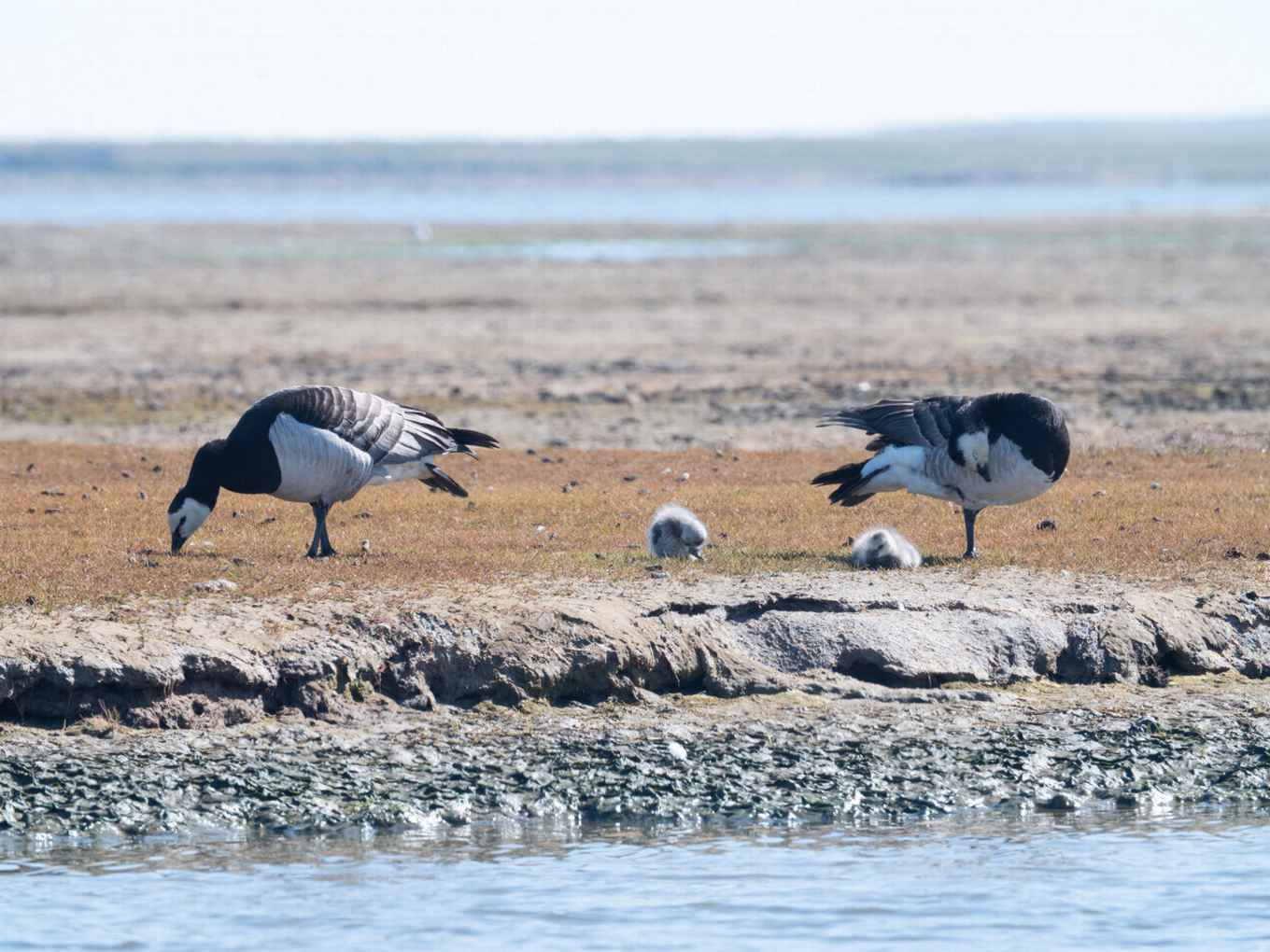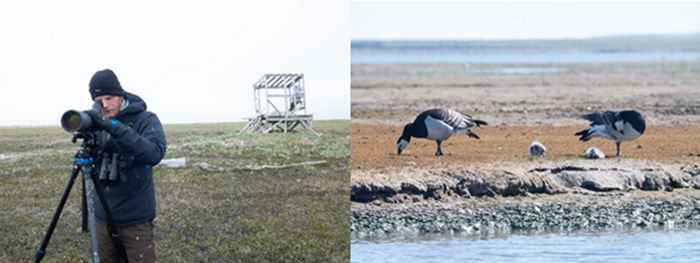Barnacle goose turns out to be more flexible than expected: Not all migratory birds still migrate
17 October 2022

Every year, billions of animals travel back and forth between different habitats. The migration is therefore one of the most striking phenomena in nature. You see it most often in birds. The barnacle goose was one of those many species of migratory birds that only spend the winter in our country. Was, because nowadays there are also individuals of this bird species that simply stay in the Netherlands all year round. Ecologist Chiel Boom of NIOO and the Vogeltrekstation located there compared the migratory and the scarcer non-migratory birds. The Nederlands Polair Programma made a subsidy available for this research. His main conclusion: “non-migratory birds have successfully adapted to a new lifestyle and are doing at least as well as their migratory peers”.
Birds that used to migrate
The change in the ex-migratory birds has occurred in a relatively short time. “Since the 1960s and 1970s, the barnacle goose population has been increasing: from approximately 20,000 animals to more than 1.2 million today,” explains Boom. “And then the expansion of the breeding area along the migration route also started.” The birds are now successfully breeding in the new breeding areas, but the timing of brooding, moulting and growth rate of the goose chicks have changed.
At the same time, we see that Arctic geese are still successful, despite the much faster warming of the climate in the Arctic. They experience both positive and negative effects. Boom: “Although warming has made their breeding season longer, the survival of the chicks has actually decreased.”

Relaxed geese
All in all, the Dutch geese appear to be under less time pressure. They do not have to forage – and build up fat reserves to do so – and they are less dependent on a large summer peak in the food supply. They are therefore less active throughout the year, which Boom was able to measure with a kind of 'pedometer for geese'. A relaxed goose therefore chooses the Netherlands.
The world is changing at a rapid pace. “It is therefore important to understand how well birds can adapt to a different environment,” Boom explains. That can also be such major changes as stopping or just starting to migrate. “This research has given us new insights into the adaptability of migratory birds. And that could also be greater in other species than previously assumed.”
Species help
While migration may no longer be necessary for all barnacle geese, migration itself is an important phenomenon. “It is part of biodiversity that contributes to all kinds of ecological processes. Think of the distribution of nutrients or genes, but also of the role that migratory birds play in the areas they visit temporarily – but often en masse. That is why it is valuable to maintain.”
Barnacle geese seem to be able to take advantage of man-made conditions, such as the higher food quality caused by modified land use. “That could also offer opportunities for devising measures to support other species of migratory birds,” Boom thinks.
Source and more information
Text translated from original Dutch publication by NIOO [link]. For more information:
- Researcher Chiel Boom, Department of Animal Ecology & Bird migration station, Netherlands Institute of Ecology (NIOO-KNAW), 06-33727903 (unreachable part of the day due to the PhD meeting), c.boom@nioo.knaw.nl
- PhD supervisor prof.dr. Bart Nolet, NIOO-KNAW & University of Amsterdam, b.nolet@nioo.knaw.nl
- Head of Bird migration station Dr. Henk van der Jeugd, tel. 06-27328803, h.vanderjeugd@nioo.knaw.nl
- Head of science communication Froukje Rienks, Netherlands Institute of Ecology (NIOO-KNAW), tel. 06-10487481 / 0317-473400, f.rienks@nioo.knaw.nl